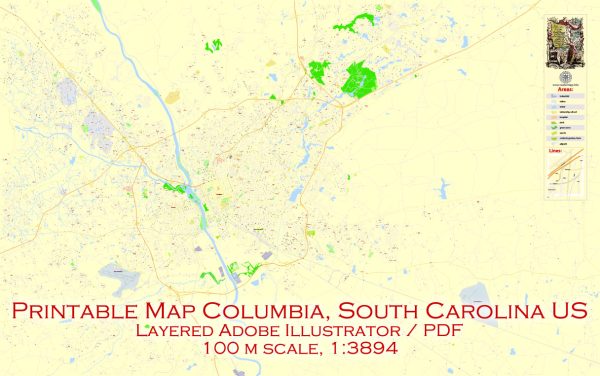Columbia, the capital and largest city of South Carolina, has a rich history of urban development that reflects the broader historical trends in the United States. Here is a brief overview of the key points in the urban development of Columbia, South Carolina:
- Founding and Early Years (1786): Columbia was founded in 1786 as the state capital, replacing Charleston. Its location was chosen for its central position within the state, making it more accessible to citizens from all regions. The city was planned with a grid layout, a common feature of urban planning during this period.
- Antebellum Era (19th Century): Columbia experienced significant growth in the antebellum period, fueled by the state’s agricultural economy, particularly cotton. The city became a hub for the trading and transportation of cotton. However, this period also saw tensions that would later lead to the American Civil War.
- Civil War and Reconstruction (1860s): In 1865, during the Civil War, much of Columbia was destroyed by a fire. The exact cause of the fire is still debated, but it resulted in extensive damage to the city. The post-war period, known as Reconstruction, brought challenges and changes to Columbia as the city and the state worked to rebuild.
- Late 19th to Early 20th Century: Columbia’s recovery from the Civil War was gradual. The late 19th and early 20th centuries saw the city’s infrastructure expanding with the introduction of electric streetcars, which facilitated transportation and contributed to suburban growth. Industrialization also played a role in the city’s development during this period.
- Mid-20th Century: Like many American cities, Columbia experienced suburbanization in the mid-20th century. The development of the interstate highway system and increased automobile usage contributed to the growth of suburbs, and Columbia saw the expansion of residential areas outside the city center.
- Recent Developments (Late 20th Century to Present): In the late 20th century and into the 21st century, Columbia has focused on urban revitalization efforts. The city has invested in downtown redevelopment, including the restoration of historic buildings, creation of parks and public spaces, and efforts to attract businesses and cultural amenities.
- Higher Education and Cultural Institutions: Columbia is home to the University of South Carolina, founded in 1801, which has played a significant role in the city’s cultural and economic life. The presence of the university has contributed to Columbia’s identity as an educational and cultural center.
Today, Columbia continues to evolve as a vibrant Southern city with a mix of historical charm and modern amenities, reflecting its diverse past and ongoing efforts to adapt to changing economic and social dynamics.


 Author: Kirill Shrayber, Ph.D.
Author: Kirill Shrayber, Ph.D.